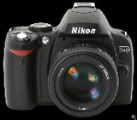The good thing about having a DSLR is the ability to change lenses depending on your photographic style or simply by what you shoot. You can change from a macro shot to a telephoto shot with a slight change in your lens. So how do you choose which lens to use at any given time? In this guide I will show you everything there is to know about this topic.
Now let's start, first of all, when choosing your lens, you should determine which kind of photos are you trying to take. Would it be an action shot? Or maybe landscapes of distant views? Or maybe you are into details of a tiny flower? Different kinds of photo styles would mean a different lens, right? Wrong. One lens could suit all your needs. It is just a matter of picking the right one. Let's take a closer look at this.
A DSLR lens are named based on their product brand (Nikkor for Nikon, Canon for Canon, etc.), focal length (50mm-300mm), and if the lens has an anti-shake capability (Vibration Reduction [VR] for Nikon, Image Stabilization [IS] for Canon, Optical Stabilization [OS] for Sigma). Lets discuss each one:
Focal Length
This is the most important aspect of your lens. This defines the coverage of the lens, and how much you’ll fit into the photo. Focal length is measured in mm, and the number which closest matches the magnification of the human eye is 50mm. Our eyes have a much bigger field of view, but if you were to look at something in person, and then through a 50mm lens, the actual magnification would be similar. This is why 50mm lenses are known as standard lenses – they’re suited to a wide variety of subjects from landscapes to portraits.
If you want a more wide-angled lens, choose a lens which has smaller focal lengths. If you’re stood in the same position, a 25mm lens will have twice the diagonal field of view of a 50mm, and could therefore be used to squeeze in large buildings, landscapes or even big group shots – ideal when you can’t step back any further. 28mm is the most common wide angle focal length and is ideal for landscape and architecture shots, but you can go much wider still if desired, and anything below 20mm is typically known as an ultra-wide angle lens.
A large focal length is suitable for telephoto shots. There are ideal for getting closer to a subject and also if your after the details. In contrast to wide angle, lenses with longer focal lengths have an inherently smaller depth of field, which means it’s easier to get a blurred background effect – again ideal for portrait, wildlife and sports photography.
Good focal lengths for portraits are typically between 85mm and 135mm – these are often known as short telephotos. Appropriate focal lengths for sports or wildlife are generally much longer – at least 200mm, and ideally 300mm or more. Professional sports and wildlife photographers often use 600mm lenses, or even longer still.
Anti-shake Mechanism
Some lenses feature anti-shake facilities which allow you to typically handhold at shutter speeds three to four times slower than normal. This won’t stop a moving subject from blurring, but it can greatly reduce the effect of camera shake.
Lens-based anti-shake systems all work in the same way by detecting wobbles and adjusting a special optical element inside the lens to counteract them in real-time. The benefit of fitting it inside the lens is you’ll see the stabilising effect through the viewfinder, which can be very reassuring, especially at longer focal lengths.
Some anti-shake lenses offer a panning mode which ignores horizontal motion and only stabilises vertically. Some of the latest models can even detect this motion and switch their mode accordingly. Older, or more basic anti-shake lenses won’t work with panning though and the feature should be temporarily switched off. Likewise if you’re using a tripod, you should switch the stabilisation off or the system could actually introduce wobbling.Focusing
Focusing is obviously a crucial aspect of any lens, and some models do it better than others. While the auto-focusing decisions are normally made within the DSLR, the actual focusing itself is performed by the lens, and there’s several things to look out for.
Some lenses feature built-in focusing motors, whereas others rely on a motor that’s built into the DSLR. In most situations you won’t need to worry too much about this, but there are a couple of important exceptions.
To save weight and money, Nikon removed the internal focusing motor from its budget D40 and D40x DSLRs, so they will only auto-focus with newer lenses that have their own focusing motors. In Nikon’s own range, you’ll need a lens with AF-S to auto-focus with the D40 or D40x. If it doesn’t have AF-S then you’ll be manually focusing with a D40 or D40x. If you’re buying a Sigma or Tamron lens, look out for models specifically compatible with the D40 and D40x.All of Canon’s current lenses have built-in focusing motors, but again some are better than others. Canon lenses with USM in their title have special ultrasonic motors which are quicker and much quieter than non-USM models. So if you’re buying a Canon lens and want quick and quiet focusing, buy a model with USM.
Nikon’s equivalent technology is called Silent Wave Motor, or SWM for short. This is the S in AF-S, so for quick and quiet focusing on a Nikkor lens, choose an AF-S model. The equivalent technology from Sony, Pentax, Olympus and Sigma is called SSM, SDM, SWD and HSM respectively; note to fully exploit SDM (DA*) lenses from Pentax though, you’ll need a compatible body like the K10D.












1 Comment
very informative... :) thanks for the info. :)
Posted on April 2, 2009 at 3:00 AM
Post a Comment